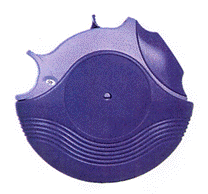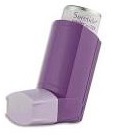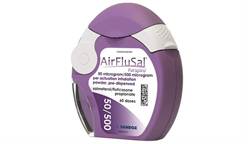BAILII is celebrating 24 years of free online access to the law! Would you consider making a contribution?
No donation is too small. If every visitor before 31 December gives just £1, it will have a significant impact on BAILII's ability to continue providing free access to the law.
Thank you very much for your support!





 specifies that '[p]rotection is claimed for the colours blue (RAL 5002) and silver (RAL 9006). The ratio of the colours is approximately 50%-50%'. As follows from above, the graphical representation and description must be evaluated in combination in order to define the sign's scope of protection. Apart from indicating two colours, the sign's description is confined to indicating a certain ratio of them. Evidently, the mere indication of such a ratio allows for the arrangement of the two colours in numerous different combinations, thus not in in a predetermined and uniform way. Depending on the arrangement of colours on different parts of 'energy drinks' or other objects related thereto, the overall impression of two colours arranged in numerous manners may be very distinct. The cancellation applicant has given various examples of possible arrangements which would fit the sign's description. The average consumer could thus not repeat with certainty the experience of a purchase. This applies in particular for the category of marks at hand since colours possess little inherent capacity for communicating specific information, especially since they are commonly and widely used, because of their appeal, in order to advertise and market goods or services, without any specific message (06.05.2003, C-104/01, Libertel, EU:C:2003:244, § 40). "
specifies that '[p]rotection is claimed for the colours blue (RAL 5002) and silver (RAL 9006). The ratio of the colours is approximately 50%-50%'. As follows from above, the graphical representation and description must be evaluated in combination in order to define the sign's scope of protection. Apart from indicating two colours, the sign's description is confined to indicating a certain ratio of them. Evidently, the mere indication of such a ratio allows for the arrangement of the two colours in numerous different combinations, thus not in in a predetermined and uniform way. Depending on the arrangement of colours on different parts of 'energy drinks' or other objects related thereto, the overall impression of two colours arranged in numerous manners may be very distinct. The cancellation applicant has given various examples of possible arrangements which would fit the sign's description. The average consumer could thus not repeat with certainty the experience of a purchase. This applies in particular for the category of marks at hand since colours possess little inherent capacity for communicating specific information, especially since they are commonly and widely used, because of their appeal, in order to advertise and market goods or services, without any specific message (06.05.2003, C-104/01, Libertel, EU:C:2003:244, § 40). "

